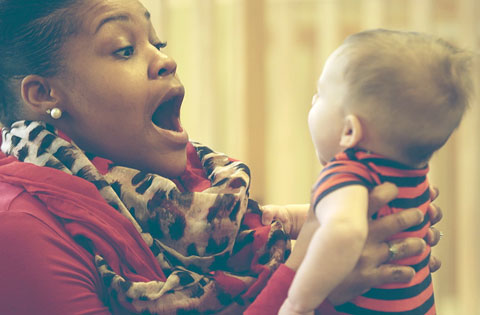About this Video
This Early Learning Moment provides an overview of the Language Development, Communication, and Literacy domain of the Illinois Early Learning Guidelines for Children Birth to Age 3. This section of the guidelines describes how infants and toddlers learn to understand and communicate about the world with other people. This section also describes how children develop the foundational oral language skills that will help them learn to read and write as they enter school.
Video
Setting Up for Success
In the video, we saw how very young children interact with their environment using their growing language and communication abilities and how adults caring for them can build a foundation of skills that will enable them to be successful readers, writers, and communicators as they grow.
Subsections for Language Development, Communication, and Literacy
- Social Communication
Children demonstrate the ability to engage with and maintain communication with others. - Receptive Communication
Children demonstrate the ability to comprehend both verbal and nonverbal communication. - Expressive Communication
Children demonstrate the ability to understand and convey thoughts through both nonverbal and verbal expression. - Early Literacy
Children demonstrate interest in and comprehension of printed materials.
Self-Assessment and Reflection
We have watched children explore and play by using their growing language and communication skills. We have seen examples of how daily routines provide opportunities to learn and develop language and literacy skills. Now, consider your interactions with children.
Does your space have:
- Books that are accessible for children to explore independently, such as board books?
- Books with language that includes rhythm, rhymes, and songs to share with children?
- Cozy spaces that encourage children and caregivers to read books and engage in quiet conversation?
- Photographs, artwork, and objects that prompt conversation and curiosity?
- Ways to bring music into your space, such as a digital music player, CD player, or your own voice?
Are you ready to:
- Watch and respond to children’s communication attempts that include words, babbling, cooing, and gestures?
- Read, talk, and sing with the young children in your care?
- Build reading, singing, and talking into your routines?


